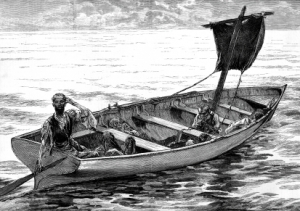Will They Get Your Cultural Allusions?
“Water, Water Everywhere” is the title of an article in the AARP bulletin. The subtitle reads “Supermarket aisles are flooded with all different types of bottled water. Are any of them worth the money?” Author Andrea Wickstrom makes the case for eschewing the bottles and drinking tap water, citing growing evidence that microplastics negatively affect human health…
Cultural allusions
An allusion is a figure of speech that makes reference to a place, person, either an actual one or one found in literature. The expression “Water, water everywhere, nor any drop to drink” is an example of the latter – it comes from “The Rime of the Ancient Mariner”, a poem by Samuel Taylor Coleridge.
There are three possible reasons, I explain at Say It For You, for using cultural allusions in content marketing:
- To get readers thinking about a product or service in a new way
- To get a point across without going into a lengthy explanation
- To cement a bond between the reader and the company or professional practitioner, based on shared experiences and knowledge
The problem is – will they get it???
Readers who do not happen to recognize the underlying story or reference point (in this case the Coleridge poem) are going to be puzzled rather than enlightened. That means that we, as content writers, must gauge our readers’ level of education. If we miscalculate their ability to recognize the allusion, the danger is that they’ll find our content frustrating rather than illuminating. (Due to the age group receiving the AARP Bulletin, the editors have made certain assumptions about their readers’ education level.)
Huh-Oh Titles
The “Water, Water Everywhere” title is an example of what I call the “Huh? Oh!” tactic. The first part (the “Huh?”) is there to startle and capture attention. The second part (the “Oh!”) explains what the text is actually going to be about. (In online marketing, that second part matches the content of the post with the terms consumers typed into their search bar.)
While, as content marketers, we need to know as much as possible about our target readers, you don’t have to qualify for membership in AARP to realize that there are titles of many types to attract readers of many ages and types!






Follow us online!